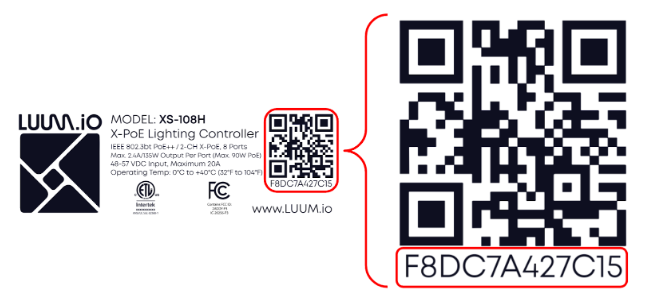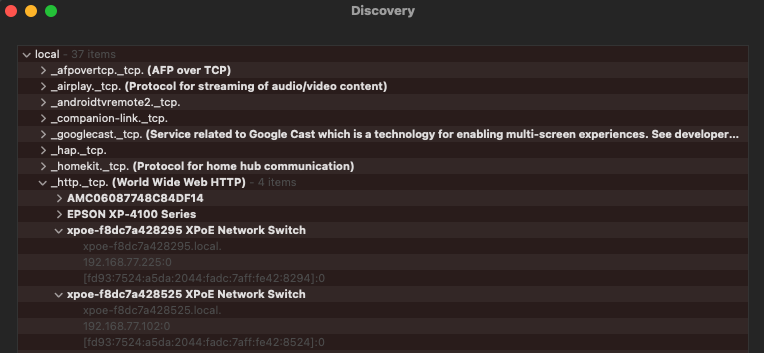LUUM.IO
X-PoE LIGHTING CONTROLLER DISCOVERY GUIDE#
About This Guide#
This guide is designed to help with the initial discovery of X-PoE lighting controllers. By following these instructions, you'll be able to successfully discover and connect to any X-PoE lighting controller on the network.
Necessary Parts#
The following parts will be necessary to complete this guide:
- A wired network.
- One or more X-PoE lighting controllers.
System Setup#
Before getting started with X-PoE device discovery, ensure the devices to be discovered are powered up and have an active network connection. Once connected to the same network as the X-PoE devices, X-PoE device discovery can begin.
X-PoE Device Discovery#
There are several ways to discover the IP address and/or hostname of an X-PoE lighting controller. Below are the most common and recommended methods.
Identification Sticker#
The hostname of the X-PoE switch can be determined by using the information on the identification sticker on the back of an X-PoE switch.

The X-PoE controller UI can be opened using a web browser and navigating to the hostname. The hostname will be "xpoe-" followed by the full mac address on the sticker, followed by ".local". More information can be found in this section of the installation guide.
Bonjour/Zeroconf Browser#
To scan for X-PoE devices on the network, use a Bonjour browser application. Depending on the operating system, the following options are recommended.
MacOS#
Download a Bonjour browser app such as "Discovery" (formerly known as Bonjour Browser) from the Mac App Store or another trusted source. Open the application and use it to find Zeroconf services on your network. X-PoE lighting controllers will be among these services found under "local" > "http._tcp.".

The X-PoE controller UI can be opened using a web browser and navigating to the IP address or .local hostname.
Windows#
Download a Bonjour browser app such as "All My LAN" from the Microsoft store or another trusted source. Scan for Services: Open the application and select "nDNS Devices" from the menu to find Zeroconf services on your network. X-PoE lighting controllers will be among these services found under "http._tcp.".

The X-PoE controller UI can be opened using a web browser and navigating to the IP address or adding .local to the device name to get the hostname.
Note
Drop the "X-PoE Network Switch" from the device name before adding .local. Example: "xpoe-f8dc7a428525.local"